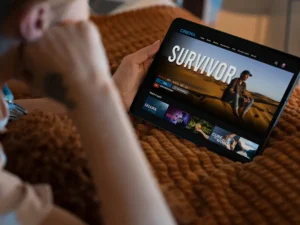Video content has become central to how brands communicate with their global audiences. Whether it’s marketing campaigns, tutorials, webinars, or social media posts, video rules the digital space. Yet many organizations overlook a critical component of effective and accessible communication: subtitles for the deaf and hard of hearing, also known as closed captioning.
Closed captioning services do more than just make content inclusive: they make brand messaging easier to understand, expand content reach, and help companies comply with global accessibility laws. In this article, we’ll take a look at the different types of captions, explain their role in accessibility, and explore why they’re valuable for brands targeting international audiences.
What is the difference between closed captions, open captions, and subtitles?
Before we go further, let’s clarify what closed captions are and how they differ from other captioning options:
- Closed Captions (CC): Designed mainly for people who are deaf or hard of hearing, closed captions include not only spoken words but also sounds like background noises, music cues, speaker changes, and tone shifts. A key feature is that viewers can turn them on or off whenever they want.
- Open Captions: These captions are permanently displayed on the screen because they’re embedded directly into the video. Viewers can’t disable them. While this might seem limiting, open captions ensure accessibility across all platforms, including those that don’t support closed captioning technology.
- Subtitles: Usually used to translate spoken content into a different language, without including descriptions of non-verbal audio elements. They focus on localizing content for speakers of different languages rather than addressing hearing accessibility.
In short, closed captions are the right choice if your goal is accessibility for people with hearing impairments and to meet legal standards. If you’re looking to reach viewers who speak different languages, however, subtitles are more appropriate. And if you want to ensure your captioning is always visible, even if it can’t be disabled, open captions work well.
H2: How closed captioning services support compliance with accessibility laws
More and more countries worldwide are enacting digital accessibility legislation that requires audiovisual content to accommodate people with hearing disabilities. Closed captioning services help brands follow these regulations by guaranteeing equal access to content.
Some important examples of these regulations include:
- Spain’s General Law on the Rights of Persons with Disabilities and their Social Inclusion: This law requires that audiovisual content produced by both public and private entities be accessible.
- Americans with Disabilities Act (ADA) – United States: The ADA imposes accessibility requirements for all digital services and public events.
- European Accessibility Act (EU): Effective from June 28, 2025, this act imposes mandatory accessibility requirements on a wide range of digital and physical products and services for public and private companies across the European Union.
- Web Content Accessibility Guidelines (WCAG): These guidelines establish an international standard for creating accessible web and multimedia content. Many countries have incorporated WCAG principles into their legislation.
Adding closed captioning to your videos can help you comply with all of these regulations. But beyond that, it also sends a clear message to your audience that you have made a social and ethical commitment to promoting diversity and inclusion, making sure no one is left out of your message.
Benefits of captioning for multinational and multilingual brands
Captioning is important for legal compliance and accessibility, but it can also offer many other tangible business advantages for international brands:
- Improves accessibility and user experience: Captions help viewers enjoy your content in all kinds of situations—people watching videos in noisy settings, those in quiet offices or public transportation where sound would be disruptive, and individuals with varying degrees of hearing ability.
- Boosts SEO and discoverability: Video platforms like YouTube and TikTok can index caption text to better understand what your video is about, leading to better search rankings.
- Increases social media engagement: Most people scroll through Instagram, Facebook, and LinkedIn without sound. Adding captions to reels, stories, and promo videos grabs their attention right away and keeps them watching longer.
- Simplifies localization and expansion: If your videos already have captions, you won’t need to transcribe them when you want to translate and adapt your content for other markets, saving you time and money.
- Ensures international legal compliance: This is a basic requirement all over the world, as we’ve mentioned. It’s especially critical if you’re in regulated industries like healthcare, education, or government.
- Improves content comprehension and retention: Captions provide readability, which even viewers without hearing difficulties can find helpful, especially when dealing with complex content or videos with a lot of background noise.
- Strengthens your brand image: Prioritizing inclusion and accessibility shows your brand cares about people, takes social responsibility seriously, and shares the values that matter today.
How to get started with professional closed captioning services
Creating closed captions is a complex task that takes a combination of technical know-how, linguistic expertise, and a solid understanding of accessibility regulations. At Linguaserve, we offer end-to-end multilingual closed captioning services, covering everything from transcription and encoding to cultural adaptation.
With experience across a wide range of industries, we provide customized solutions based on where your videos are hosted, whether on websites, social media, e-learning platforms, virtual events, or elsewhere.
Professional closed captions don’t just open your brand to the world: they also make it more accessible, improve your online presence, and strengthen your reputation. Ready to take the next step toward more inclusive and international content?



